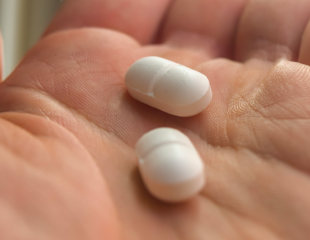So much for leaving without a trace.
Everywhere we go, we slough off skin cells, leaving traces of ourselves and our habits — the food we eat and the drugs we take, among other things — on things we touch. It also means that unlocking these chemical trails from these common objects could be key to solving criminal cases in the future.
Physical evidence is an important piece of an investigation, but two of the most common types of DNA and fingerprints could benefit from complementary forms of evidence, according to the team’s study published Monday in the journal “Proceedings of the National Academy of Sciences.”
DNA and fingerprints are often indispensable tools in determining the guilt or innocence of suspects and producing leads in investigations. But good samples of either may not always be available. In some cases there may not be enough DNA for a sample, or only a partial or smudged fingerprint at a crime scene.
So lead author Amina Bouslimani and her colleagues say skin traces recovered from personal objects at a crime scene — pens, keys, phones, etc. — leave chemical trails that can help investigators understand a person’s individual routine.
These traces can reveal information on habits, lifestyle — even medical conditions.
The researchers swabbed the phones of 39 people for skin cells and used a technique called mass spectrometry to identify different molecules in the samples by their weight. They compared these measurements to references found in a database of molecular profiles, previously developed by two members of the research team.
The skin cells offered all kinds of evidence. The team found medications such as anti-inflammatory and antifungal skin creams, hair loss treatments, antidepressants and eye drops. They found food traces of citrus, caffeine and various herbs and spices.
Remarkably, the tests even found traces of sunscreen and DEET mosquito repellent months after those products had last been used by the phone owners.
And the traces found on the phones corresponded with skin samples taken from the participants’ hands.
Compiling a full profile of all the molecules on a single object can say a lot about a person.
“By analyzing the molecules they’ve left behind on their phones, we could tell if a person is likely female, uses high-end cosmetics, dyes her hair, drinks coffee, prefers beer over wine, likes spicy food, is being treated for depression, wears sunscreen and bug spray — and therefore likely spends a lot of time outdoors — all kinds of things,” said Bouslimani, a post-doctoral researcher at Skaggs School of Pharmacy at the University of California, San Diego, in a press release. “This is the kind of information that could help an investigator narrow down the search for an object’s owner.”
There are limitations, of course. People cannot be “matched” to this kind of evidence in the way they can be matched to fingerprints or DNA. But it could provide clues about a person in question.
The team says that making this approach more feasible would require a much larger database of molecular information. Such databases could be used for everything from tracking terrorists to measuring the impact of pollutants to determining whether a patient is taking medication.
[“source-ndtv”]


